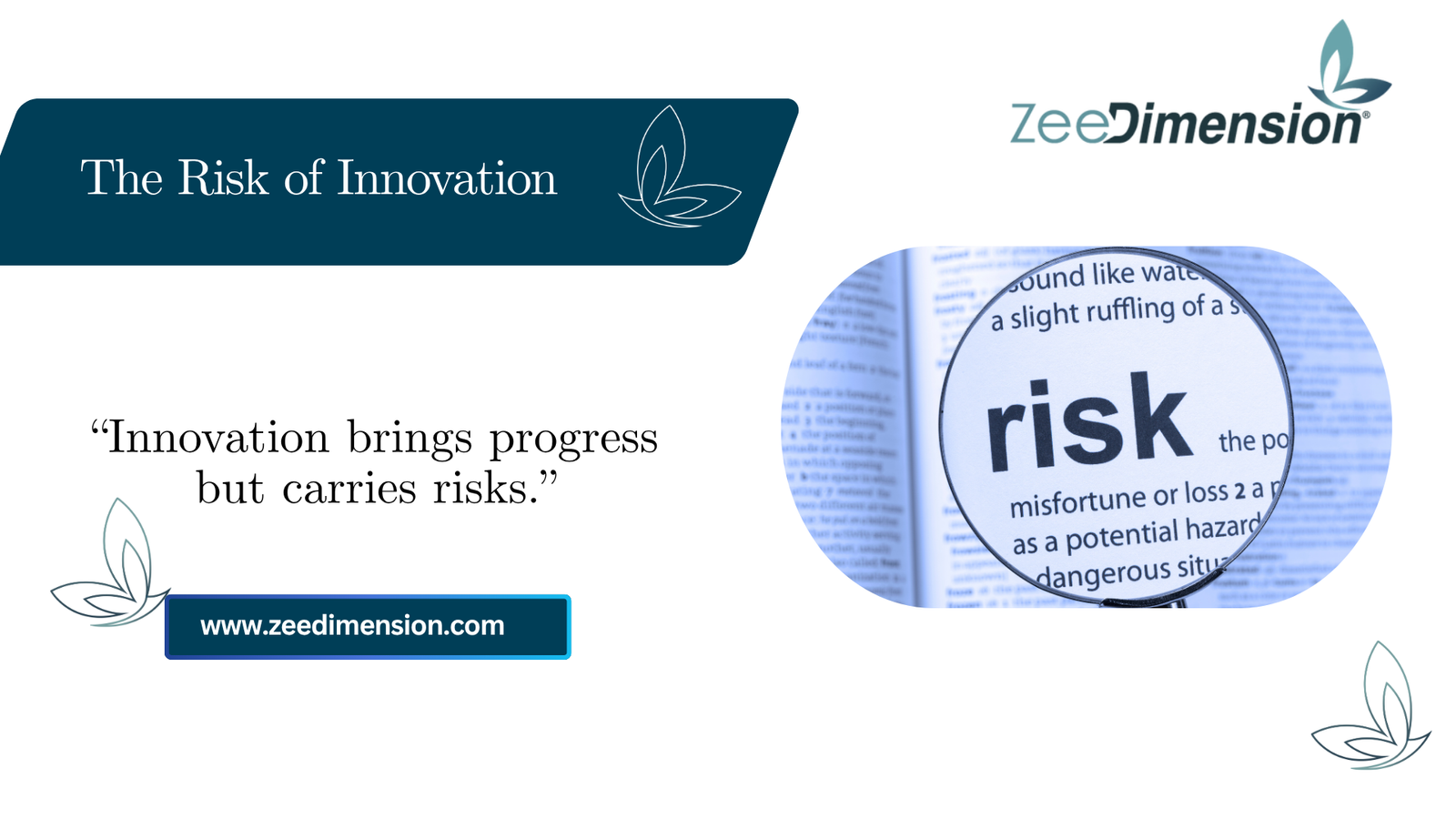
INTRODUCTION
Innovation is a key driver of progress, fostering economic growth, transforming industries, and solving complex problems. However, every innovative idea or invention carries a degree of uncertainty. Innovation involves not just bold ideas but also managing associated risks. Understanding these risks enables organizations and societies to innovate responsibly and sustainably.
What Are Innovation Risks?
Innovation risks refer to potential negative outcomes when attempting something new. These risks can be :
1.Financial
2.Technical,
3.Strategic,
4.Social
Innovators face the possibility of:
1.Failure.
2.Market rejection.
3.Mnintended consequences
When launching new products, adopting new technologies, or redesigning business models. Essentially, innovation is a gamble that can result in significant success or failure.
Types of Innovation Risks
Innovation risks manifest in various forms, including:
- Technical Risk: Will the concept function as intended?
- Market Risk: Will the target audience need or desire the innovation?
- Financial Risk: Can the development and scaling of the innovation be adequately funded?
- Operational Risk: Can the innovation be seamlessly integrated into existing systems?
- Reputational Risk: How will stakeholders react if the innovation fails or faces significant challenges?
By acknowledging and understanding these risks, organizations can better navigate the complexities of innovation. To further enhance the accuracy and usefulness of this understanding, consider adding:
- Specific examples.
- Case studies that illustrate these concepts in action.
Conclusion
In conclusion, innovation is a double-edged sword that brings both opportunities and risks. By understanding the various types of innovation risks, organizations can better navigate the complexities of innovation. Acknowledging and managing these risks is crucial for responsible and sustainable innovation. As organizations continue to innovate, they must strike a balance between:
- Creativity
- Caution
to achieve success while minimizing potential downsides.







